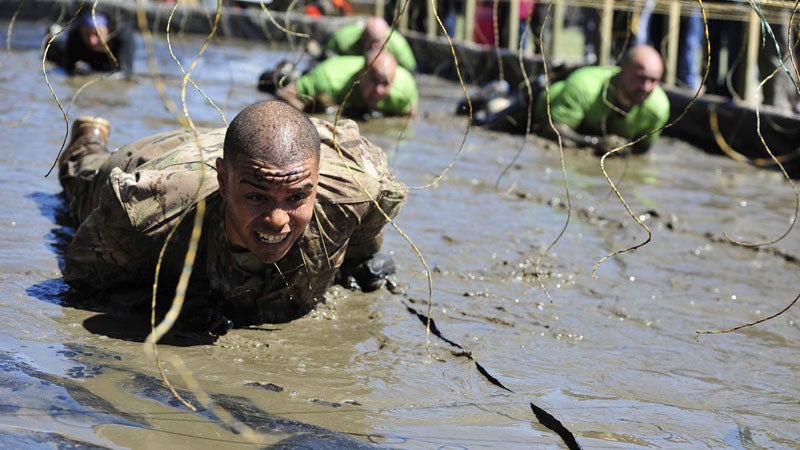A new study on Tough Mudder and obstacle races takes a closer look at the injuries sustained during these events. published by the in November, looks closely at five patients who suffered injuries from a June 2013 Tough Mudder race in Pennsylvania. Of the five patients, four experienced injuries associated with the electrical obstacles, a unique feature of Tough Mudder and other obstacle races.?
The 5 cases begin as follows:
Case 1: ?An 18-year-old man arrived by emergency medical services (EMS) for chest discomfort. He self-reported that it began immediately after he received 13 electrical shocks during the last obstacle in a Tough Mudder race.
Case 2: A 28-year-old man arrived by EMS for severe headache and altered mental status. He sustained multiple electrical shocks to the head while running through the water in an obstacle and experienced syncope and altered mental status there after.
Case 3: A 31-year-old man arrived by EMS for right-sided weakness and altered mental status. At the scene, he was witnessed to have had possible seizure activity, details unknown. He had completed 20 of 22 obstacles when he developed sudden onset of speech difficulty, confusion, and inability to move his entire right side.
Case 4: A 41-year-old man arrived by EMS, complaining of facial and head injury after syncope. On the last course obstacle, he was struck by two electric cords in the head. The jolt caused him to lose consciousness and land face first in a hard mound of dirt.
Case 5: A 25-year-old woman arrived by EMS. At the last obstacle, just before the finish line, she was shocked on the right side of the chest. She felt light headed and near-syncopal, and she was handed a beer to drink. According to EMS personnel, during transport the patient stated that she was anxious, felt as if her heart were racing and she might pass out, and was incontinent of urine in the ambulance.?
All of the patients were discharged from the hospital in four days or fewer.
Although the study concludes without any decisive evidence or claims against these races, it illuminates the unique set of obstacles participants are faced with and their inability to train for experiences like electroshock. Unlike a marathon or other endurance races, Tough Mudder participants cannot likely improve their performance in obstacles involving electroshock or a 9-foot jump through training, according to . This research points to the lack of training as a possible cause for this particular pattern of injuries.
Of the 22,000 participants in the June 1 Tough Mudder race, 38 injuries were reported.
In 2010, 41,000 people entered obstacle races across 20 U.S. events. This year, a predicted 1.5 million people will enter in some 150 events.
For more on the dangers of obstacle races, see ºÚÁϳԹÏÍø’s January feature A Death at Tough Mudder.


